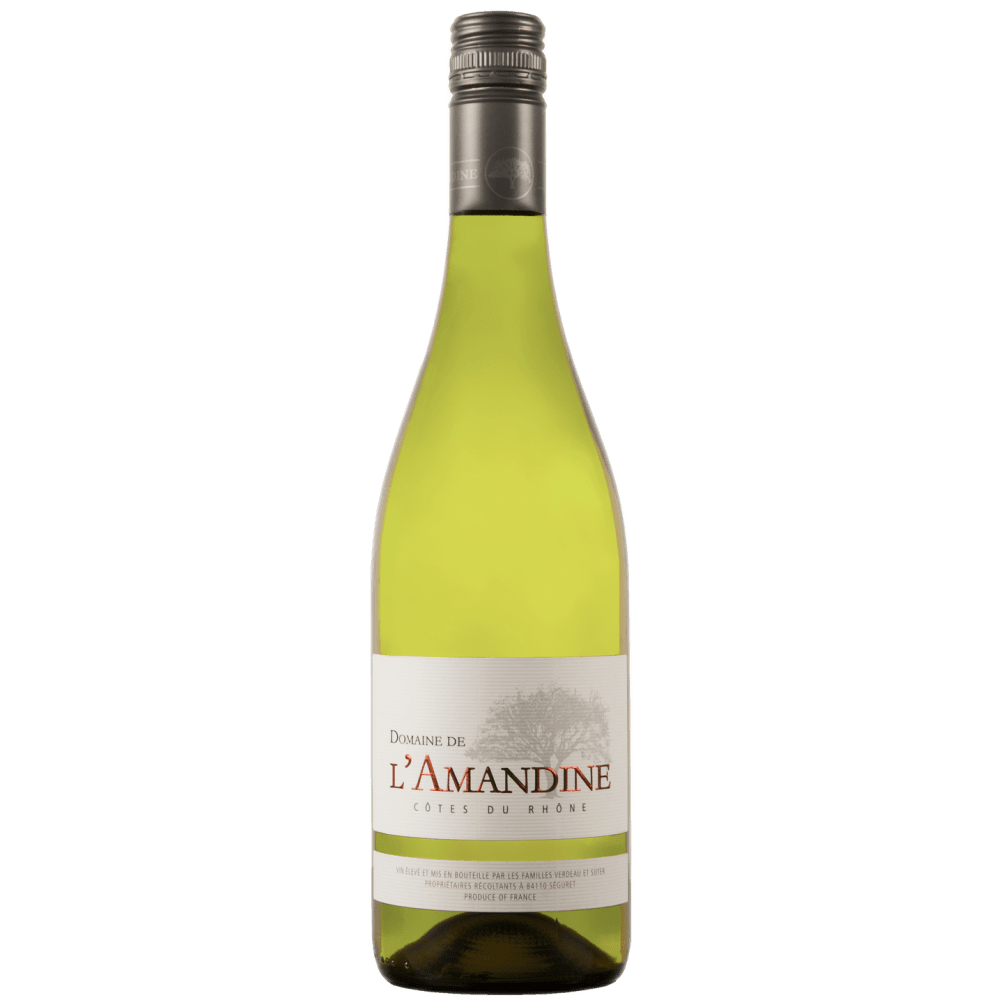No products in the cart.
Domaine de l’Amandine Côtes du Rhône White 2023
Viognier, Marsanne, Roussane, Clairette, Bourboulenc
Clay-limestone.
The robe is vibrant with a white gold sheen. Co-fermentation allows for the gentle fusion of this blend of five grape varieties. The defining characteristic of this wine is the freshness imparted by our terroir. A certain minerality is discernible on the nose before it opens to reveal fragrant notes of star anise, lemon blossom, kumquat and candied lemon. Pleasing/satisfying and harmonious on the palate, there is a lingering freshness on the finish.
10.40€
Shipping costs are calculated per box of 6 bottles. Each box can contain a mixed selection of wines.
Beyond the Label
Reviews
Beyond the Label
Style
White
Vintage
2023
Region
Rhône, France
Drinking time
1 to 3 years
Grape varieties
Viognier, Marsanne, Roussanne, Clairette, Bourboulenc
Reviews
Only logged in customers who have purchased this product may leave a review.
Producer profile
The story begins in 1968, when Jean-Pierre Verdeau, accompanied by his wife Maryse, creates Domaine de l’Amandine. Spurred on by the ambition to make his own wine with the few hectares bequeathed to him by his father, Jean-Pierre works tirelessly to extend and develop the domain. The wine is initially sold in bulk to negotiants. Thanks to his vision and determination, Domaine de l’Amandine grows. In 1984, with the purchase of the Grange Vieille vineyard in Vaison-la-Romaine, with its 6 hectares of hillside vines, the domain begins to produce higher quality wines. Two years later, the investment in a bottling machine allows Jean-Pierre to start selling his own wines. Jean-Pierre continues to run the domain until 2013, when his daughter Sabine and his son-in-law Alex Suter join him, breathing fresh energy and dynamism into the winery. Alex, an Englishman, grew up in South Africa, where his father managed a well-known winery in Stellenbosch. Two years later, their eldest daughter Mathilde, having studied viticulture and oenology, follows in the family footsteps and becomes part of the team at L’Amandine. Today, Sabine, Alex and Mathilde, under the watchful eye of Jean-Pierre, are working hard to keep the families proud wine-growing and wine-making traditions alive. Their deep bond with the terroir finds full and eloquent expression in the wines of Domaine de l’Amandine.

Other Wines of Interest
If you like this wine, we recommend you try


Reviews
There are no reviews yet